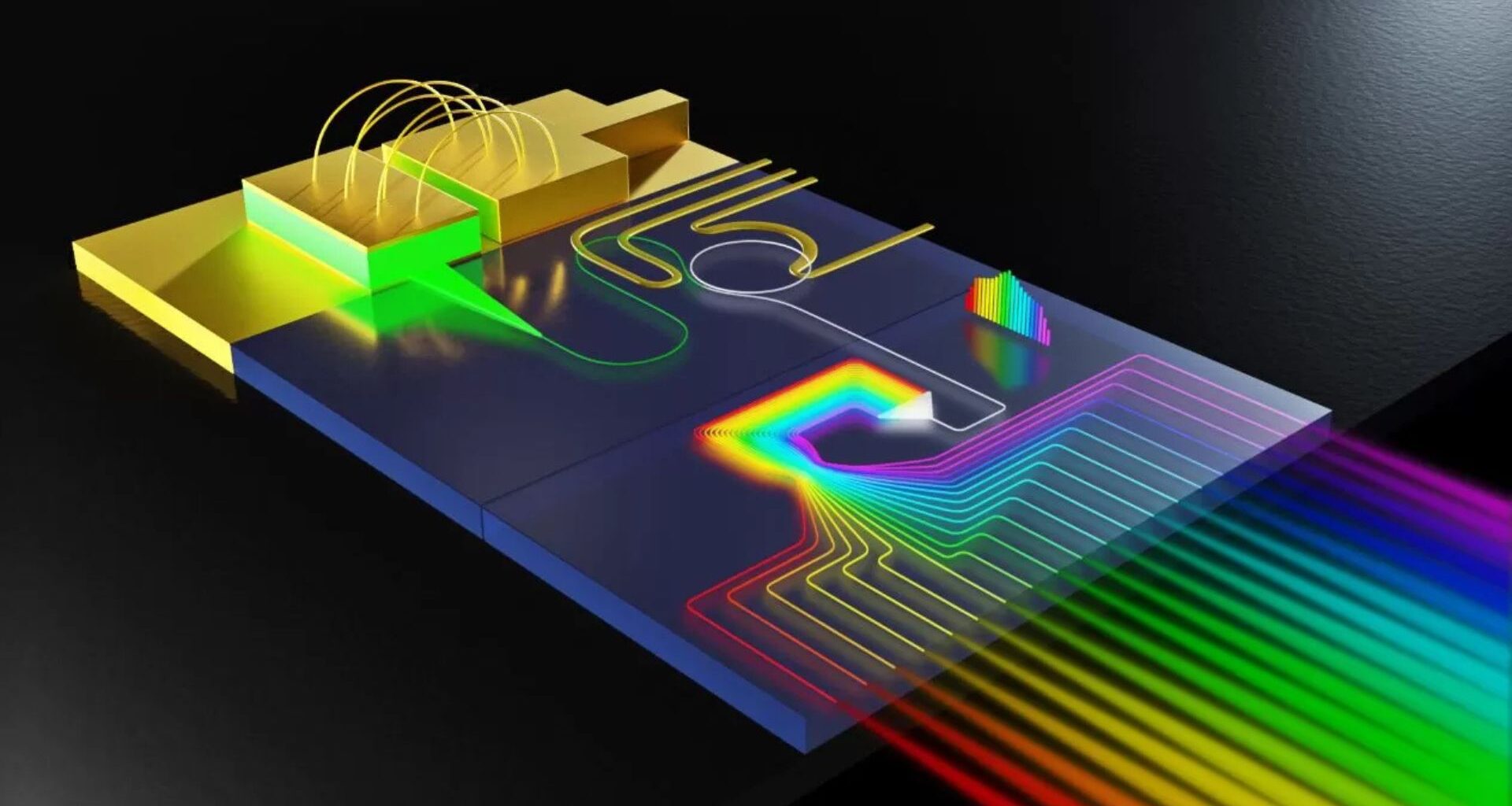The race for faster and more efficient data systems is reaching a critical point. With artificial intelligence driving an explosion in global data demand, even advanced fiber-optic networks are struggling to keep up. Most data centers today still rely on single-wavelength lasers, which means each fiber can only carry one stream of data.
To move faster, engineers need light sources that can send multiple streams through the same fiber at once. That’s what researchers at Columbia University have now achieved.
Led by Michal Lipson, the team has developed a chip that can generate powerful “frequency combs,” special light sources made up of dozens of evenly spaced wavelengths.
A few years ago, while working to improve LiDAR technology, Lipson’s team stumbled upon an unexpected phenomenon. They were testing high-power chips designed to produce brighter beams of light when something surprising happened.
“As we sent more and more power through the chip, we noticed that it was creating what we call a frequency comb,” says Andres Gil-Molina, a former postdoctoral researcher in Lipson’s lab.
A frequency comb is a type of light that contains many distinct colors, each precisely spaced apart. Every color, or frequency, can carry its own stream of information, allowing dozens of signals to travel side by side without interference.
Until now, producing this kind of light required bulky and expensive laser systems.
“The technology we’ve developed takes a very powerful laser and turns it into dozens of clean, high-power channels on a chip,” says Gil-Molina, now a principal engineer at Xscape Photonics.
“That means you can replace racks of individual lasers with one compact device, cutting cost, saving space, and opening the door to much faster, more energy-efficient systems.”
“This research marks another milestone in our mission to advance silicon photonics,” Lipson said. “As this technology becomes increasingly central to critical infrastructure and our daily lives, this type of progress is essential to ensuring that data centers are as efficient as possible.”
Cleaning up chaotic light
The project began with a straightforward question – What’s the most powerful laser that can fit on a chip?
The team selected a multimode laser diode, which is widely used in medical and industrial equipment. These lasers can produce massive amounts of light, but the beam is often unstable and difficult to control.
Integrating such a messy light source into a silicon photonics chip required careful engineering. “We used something called a locking mechanism to purify this powerful but very noisy source of light,” Gil-Molina explains.
The method filters and reshapes the beam into a cleaner and more stable output, a property known as high coherence.
Once the light is stabilized, the chip’s optical properties naturally split it into evenly spaced colors, creating a frequency comb. The result is a compact, efficient, and high-power light source that combines industrial strength with scientific precision.
A timely leap for AI and beyond
The breakthrough arrives at a crucial moment for computing and communication. As artificial intelligence systems grow larger, data centers are struggling to move information quickly between processors and memory.
Frequency combs could change that by allowing many data channels to run simultaneously through a single optical fiber.
By miniaturizing this technology, Lipson’s team has created something that could reshape how data moves inside the most advanced computing systems. The same chip technology could also be used for compact spectrometers, quantum devices, optical clocks, and next-generation LiDAR systems.
“This is about bringing lab-grade light sources into real-world devices,” says Gil-Molina. “If you can make them powerful, efficient, and small enough, you can put them almost anywhere.”
The study is published in the journal Nature Photonics.
